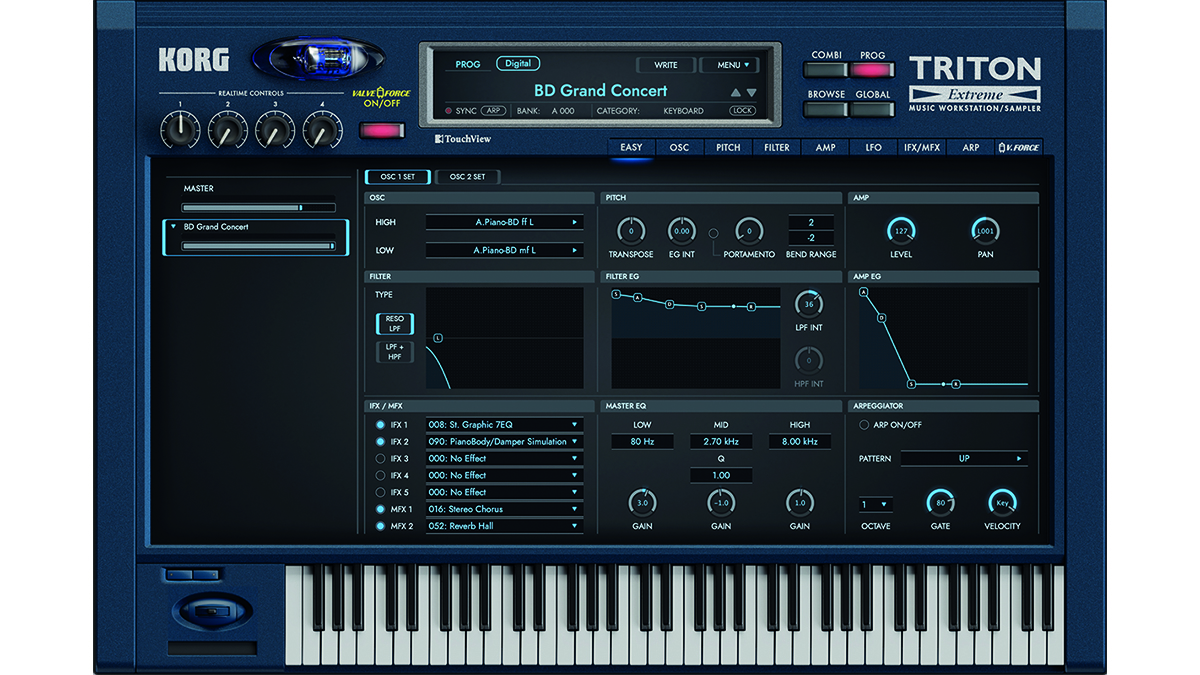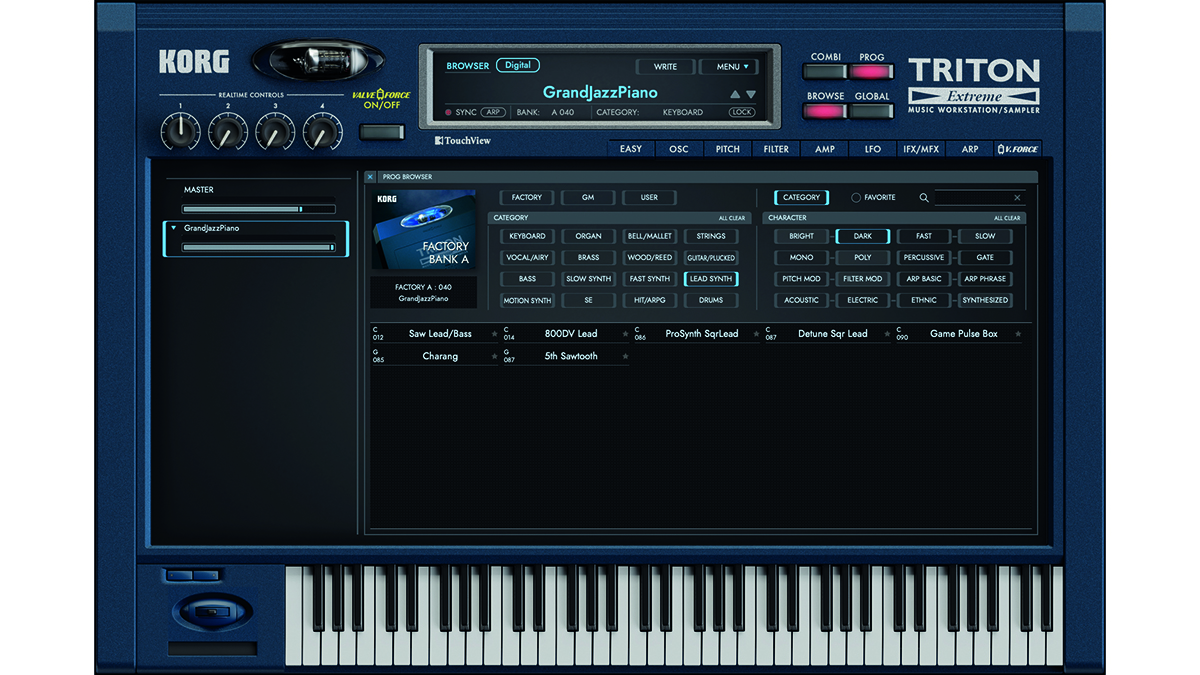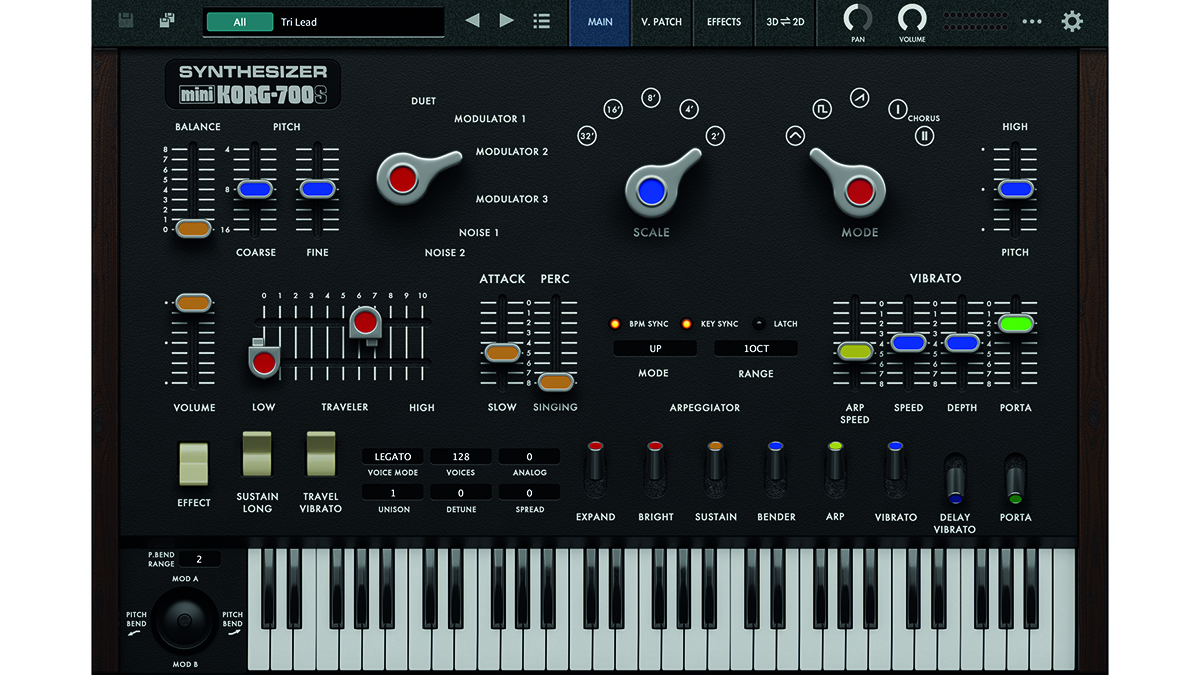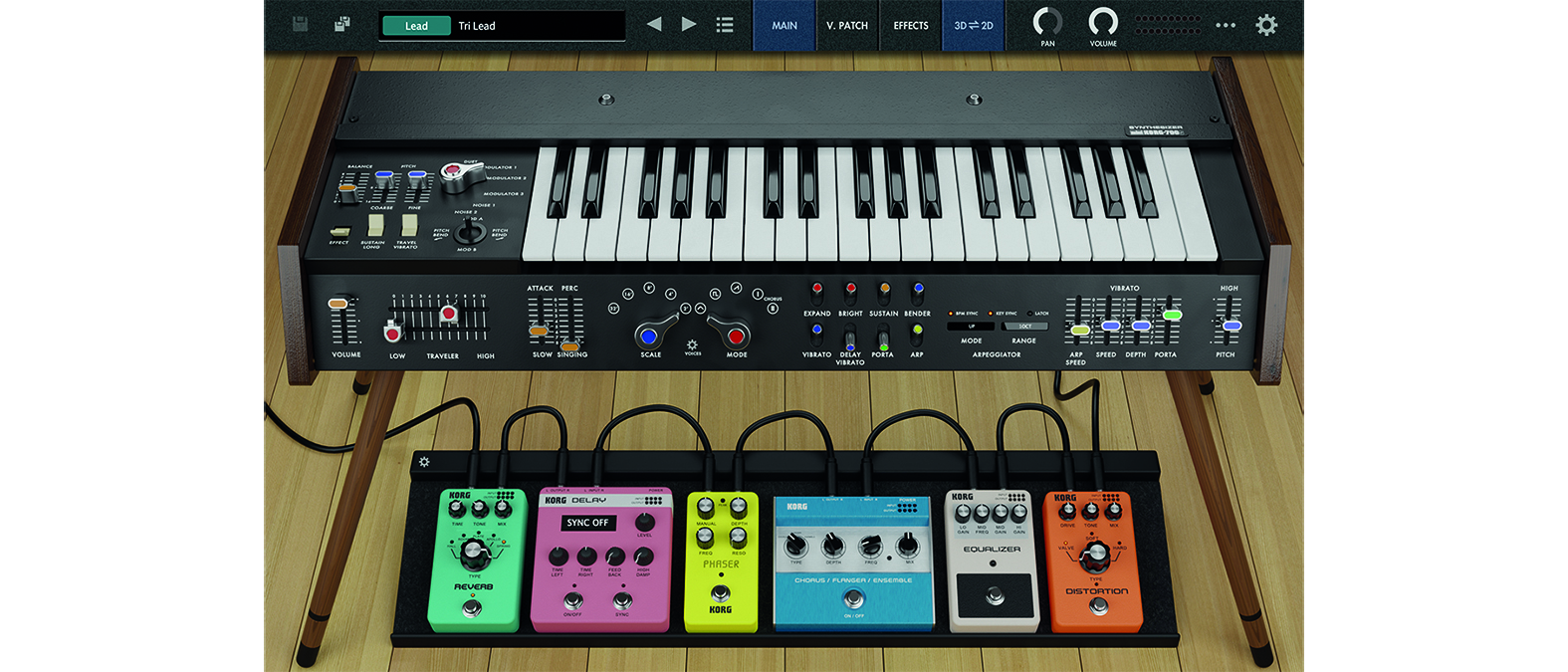MusicRadar Verdict
The biggest and best update to Korg Collection makes it more of a bargain bundle and a great way to buy classic Korgs.
Pros
- +
Good value considering…
- +
Fantastic reproduction of synths covering four decades.
- +
Love the easy side of Extreme.
- +
Surprisingly modern sounds from mini.
Cons
- -
Original Prophecy owners will miss the hardware touch strip.
MusicRadar's got your back
Korg Collection 3: What is it?
The latest v3 update to Korg's Collection adds three Korg synths from the 70s, 90s and 2000s. Before we get into the new (old) three additions, just a quick recap…
Collection is actually an update to one of the oldest sets of softsynths ever, the Korg Legacy Collection, released back in 2004, then comprising the Korg MS-20, Polysix and Wavestation. Since then there have been several variations, notably the Digital edition (with the Wavestation, the M1 and the MDE-X effects) and Analog Edition (with the Polysix, MS-20 and Mono/Poly).
Eventually and thankfully – it was a bit confusing – the whole lot were put together into Korg’s Collection version 1, featuring the five synths and effect plus the fantastic ARP Odyssey emulation (Korg had produced the ARP hardware by this point). The Triton was added for Collection v2 and now this latest Collection 3, adds a miniKORG-700S, Korg Prophecy and Triton Extreme.
This means you now get 10 synths plus the MDE-X effects for $399, a significant saving over buying them individually (as they are each priced between $99 and $249). So let’s have a look at the latest additions…
Korg Collection 3: Performance and verdict
First up, you get one of the earliest Korg instruments, oft called the company’s first synth, the miniKORG-700s. This curious device had controls for its 2 x VCO/VCF monophonic engine below the keyboard and to the left, and the software emulation allows you to switch between a 2D and 2D view to get access to them.
Korg didn’t label its synth controls with the familiar names we now know them by – this was early days after all – so you get a Traveler (sic) controller for the hi- and lo-pass filters and Expand for the envelope.
As with all Korg softsynths it uses Korg’s CMT (Component Modeling Technology) to accurately emulate the original synth, with 150 presets covering a wide variety of timbres. You get classic synths leads, plucks and basses with more modern, programmed pads, motion sounds and complex arp sounds, many of which are bolstered with modern flourishes like the effects (more later).
Want all the hottest music and gear news, reviews, deals, features and more, direct to your inbox? Sign up here.

Next up we have one of our favourite 90s synths, the Korg Prophecy. This arrived as dance music was at something of a peak, and offered not only hands-on, real-time 303 bassy sounds but a whole lot of real instruments, all given life and lustre thanks to a unique (for then) touch strip modulation bar that allowed you to add a dose of any controller to any sound. It was a mono synth and quite weird in that it straddled so many sounds and styles, but we loved it.
Here it is recreated in all of its glory, guts and all. You get to see right inside its MOSS (Multi-Oscillator Synthesis System) architecture and reminisce in those preset sounds. The pros are that you get polyphony and to see much of the guts of Prophecy on screen, only achieved with the original if you surfed down through layers of menus. This opens up its sound design possibilities and if you didn’t know this from using the original hardware, you’ll soon realise what a flexible beast it was.
Other sounds bring a tear to our eye, wondering where that quarter of a century has gone…
However, negatives are that the original hardware really did invite lots of hands-on modulation action – tweaking, sliding and bending that modulation strip – and unless you have a decent hardware controller, you won’t easily recreate much of the fun of the original. Still the sounds are spot on, many still surprisingly relevant and many others bringing a tear to our eye wondering where that quarter of a century has gone!

Finally we get the Korg Triton Extreme, a 2004 synth that Korg describes as ‘the vacuum tube-equipped high point’ of the Triton range. And it’s exactly that. The original featured just about everything that was ever thrown at the Triton range, a synth that already had just about anything your could throw into a synth!
Launched at the end of the 20th century, it was one of those famous Korg workstations that had every sound you could think of, effects, arpeggiator, sequencing, sampling, kitchen sink… The Extreme features extra sound packs and that vacuum tube Valve Force circuitry, something Korg championed at the time to give its synths a more rounded analogue sound.

Here you literally get all of those sounds and features in software but also a clever filter system and tabs to access sounds and features. It’s much easier to use than it really should be given the scope of the original, and top marks to the Korg designers for making it work so well.
21st century extras
Korg’s CMT standard is really used to full effect here to recreate the sounds of the original synths in exacting detail, but as good as that is, it’s the modern flourishes and additions that make Collection 3 a relevant set of synths for the modern producer.
The plugin pedal effects on miniKORG, for example, really do add necessary dirt and dynamics, and the 2D top-down view plus three screen size options make it a welcome UI for contemporary softsynth users.

With Triton Extreme, the modern twists are there for other reasons: to make this monster synth easy to deal with! You get an ‘Easy’ mode that just has the main parameters on screen, and the (literally) thousands of presets can be navigated by type or character (Bright, Dark, Acoustic, Electric and so on). The old sequencer has been removed, though – you can do all that in your DAW – but the original dual polyphonic arpeggiator is there along with 307 patterns to aid songwriting.
Finally, Prophecy has polyphony and more on display to allow for more scope for experimentation, something you can say about all three plugins.
Is it a hat-trick?
Overall, then, you really do get a great cross-section of synth technology in the v3 update, from the quirky 70s, through to the equally odd but beautifully controllable Prophecy right up to the do-it-all and know-it-all Triton.

• Arturia V Collection 8
The original synth collection covers just about every other synth – great value for what you get.
• IK Multimedia Syntronik
Another set of 17 non Korgs that could complete your classic synth collection for decent cash.
That’s pretty much all you need synthwise in just the three update synths, then, making this easily the most significant update to Korg’s Collection, Legacy or otherwise, since launch. And that means the best value too. You can buy the instruments individually, but, honestly, we’d recommend going for the lot if funds allow, as it makes so much more financial sense.
Collection 3 is a serious contender for your cash and offers the best of all eras. Fabulous.
MusicRadar verdict: The biggest and best update to Korg Collection makes it more of a bargain bundle and a great way to buy classic Korgs.
Korg Collection 3: Hands-on demos
Korg
BlessedbyGBeats
Emlyn In The Mix
Korg Collection 3: Specifications
- OS: Mac OS X 10.13 High Sierra or higher (latest update)/Windows 10 64bit* or higher (latest update) * 32bit environment is not supported.
- CPU: Intel Core i5 or better (Core i7 or better recommended).
- Memory: 8 GB RAM (16 GB or more recommended).
- Storage: 8 GB free disk space (SSD recommended).
- Plug-ins: AU, VST, AAX (Supported 64bit plug-ins only).
- CONTACT: Korg
Computer Music magazine is the world’s best selling publication dedicated solely to making great music with your Mac or PC computer. Each issue it brings its lucky readers the best in cutting-edge tutorials, need-to-know, expert software reviews and even all the tools you actually need to make great music today, courtesy of our legendary CM Plugin Suite.

